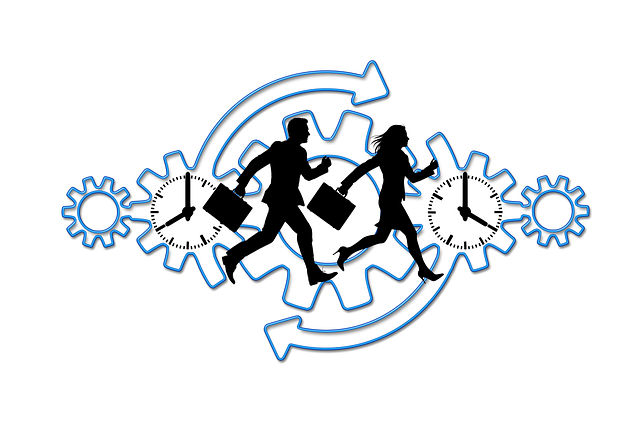The 5S training methodology, rooted in Japanese lean management principles, offers a transformative approach for chaotic work environments. This system comprises five core steps: Sort (categorize items), Set in Order (designate tool places), Shine (regular cleaning), Standardize (establish guidelines), and Sustain (ingrain practices). By promoting employee participation, organizations cultivate a culture of order driving process standardization and continuous improvement. Implementing 5S continuous improvement strategies streamlines processes, enhances efficiency, reduces errors, and fosters collaboration, ultimately boosting business outcomes in today's competitive market through effective workplace organization and process standardization.
In today’s competitive business landscape, efficient processes are vital for success. A powerful framework like 5S training offers a structured approach to transform workplaces. This article explores the core principles of 5S, its synergy with Lean management, and the profound impact of workplace organization on productivity. We delve into continuous improvement techniques, highlighting the importance of standardization as a foundation for process excellence. Additionally, we provide practical steps for implementing and sustaining a streamlined framework.
- Understanding the Core Principles of 5S Training
- Integrating Lean Management for Maximum Efficiency
- The Impact of Workplace Organization on Productivity
- Continuous Improvement: Unlocking the Power of 5S
- Standardization: A Foundation for Process Excellence
- Implementing and Sustaining a Streamlined Framework
Understanding the Core Principles of 5S Training

5S training is a powerful tool within lean management aimed at transforming chaotic work environments into havens of efficiency and productivity. The core principles, rooted in Japanese origin, revolve around five key words: Sort, Set in Order, Shine (Clean), Standardize, and Sustain. This systematic approach to workplace organization isn’t merely about aesthetics; it’s a strategic framework for process standardization and continuous improvement. By encouraging employees to regularly participate in 5S practices, organizations can foster a culture of order and discipline that translates into streamlined operations.
The first step, sorting, involves identifying and categorizing items within the workspace, eliminating unnecessary clutter. This is followed by setting things in order, ensuring every tool and material has its designated place. Regular cleaning or “shining” maintains this organized state, preventing the accumulation of dirt or debris that could hinder productivity. Standardization comes into play with clear guidelines for maintaining this system, while sustainability ensures these practices become ingrained in the organization’s culture, driving continuous improvement in process efficiency.
Integrating Lean Management for Maximum Efficiency

Implementing Lean Management principles is a powerful strategy for any organization aiming to streamline its processes and achieve maximum efficiency. At the heart of this approach lies the renowned 5S method, a comprehensive training program that transforms workplaces into organized, streamlined environments. By teaching employees the art of 5S—Sort, Set in Order, Shine (Clean), Standardize, and Sustain—organizations can create a culture of continuous improvement.
This disciplined methodology ensures every workspace is optimized for productivity. Process standardization becomes second nature as staff members learn to minimize waste and maximize workflow efficiency. The 5S training encourages a systematic approach, where each step of a process is meticulously examined and refined. As a result, organizations can expect improved productivity, reduced errors, and enhanced overall workplace organization, solidifying their position in today’s competitive market.
The Impact of Workplace Organization on Productivity

In today’s competitive business landscape, workplace organization is a key driver of productivity and efficiency. A well-organized workspace reduces time wasted on locating tools or documents, enabling employees to focus more on their tasks at hand. This is where 5S training comes into play – a methodology rooted in lean management that promotes an orderly, clean, and efficient environment through sorting, setting in order, shining (cleaning), standardizing, and sustaining these practices. By implementing 5S continuous improvement strategies, organizations can achieve process standardization, minimizing variations that lead to inefficiencies.
A structured workplace doesn’t just enhance individual productivity; it fosters a culture of collaboration and innovation. When every employee has access to what they need, when they need it, communication flows smoothly, and projects progress faster. The ripple effect of an organized workspace extends to better morale, increased job satisfaction, and ultimately, improved business outcomes.
Continuous Improvement: Unlocking the Power of 5S

In today’s competitive business landscape, continuous improvement is no longer an option but a necessity. Among various methodologies, 5S training stands out as a powerful tool for driving lean management and workplace organization. The term “5S” refers to five principles: Sort, Set in Order, Shine (Clean), Standardize, and Sustain. By implementing these practices, organizations can achieve remarkable process standardization and efficiency gains.
5S continuous improvement involves systematically examining every aspect of the workplace, removing unnecessary items, organizing tools and equipment for easy access, and maintaining a clean and safe environment. This approach not only enhances productivity but also fosters a culture of quality and excellence. By standardizing processes and ensuring everything has its place, employees can work more efficiently, reducing waste and optimizing workflows.
Standardization: A Foundation for Process Excellence

Process streamlining begins with a strong foundation in workplace organization and process standardization. This is where 5S training comes into play, offering a proven framework for achieving excellence in lean management. By implementing 5S principles—Sort, Set in Order, Shine (Clean), Standardize, Sustain—organizations can create an environment that fosters efficiency and reduces waste.
Workplace organization isn’t just about physical spaces; it involves standardizing processes to ensure consistency and predictability. This means defining clear steps for every task, documenting workflows, and training employees on these standardized procedures. Such a structured approach enables teams to work more effectively, enhancing productivity and quality while facilitating continuous improvement initiatives like 5S continuous improvement programs.
Implementing and Sustaining a Streamlined Framework

Implementing a streamlined framework, such as adopting lean management principles and 5S training, is just the first step in enhancing workplace organization. To ensure sustained success, continuous improvement must become a way of life within the organization. This involves regularly reviewing and refining processes through the 5S continuous improvement methodology, focusing on sorting, setting in order, shining (cleaning), standardizing, and sustaining. By fostering a culture that prioritizes process standardization, teams can identify and eliminate waste more effectively, leading to increased efficiency and productivity.
Regular training sessions and ongoing communication are vital to keeping everyone aligned with the framework’s objectives. Engaging employees at all levels in the 5S methodology encourages buy-in and empowers them to take ownership of their work areas and processes. This collaborative approach ensures that any deviations or new challenges can be addressed promptly, maintaining the integrity and benefits of the streamlined framework over time.
